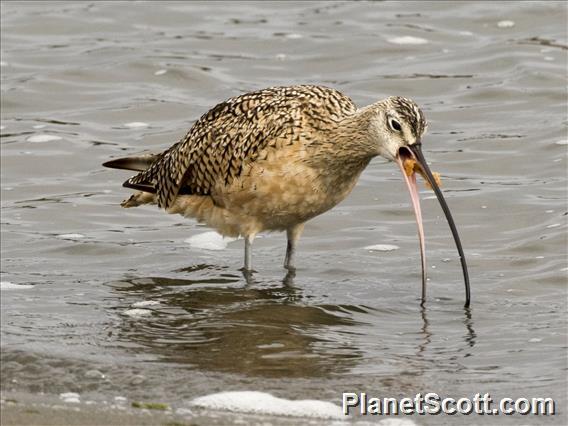Long-billed Curlew (Numenius americanus)

Long-billed Curlew (Numenius americanus)
×


Long-billed Curlew (Numenius americanus)
About Long-billed Curlew (Numenius americanus)
- Kingdom: Animals
- Phylum: Chordates
- Class: Birds
- Order: Pelicans
- Family: Sandpipers and Allies
The long-billed curlew is a large North American shorebird of the family Scolopacidae. This species was also called "sicklebird" and the "candlestick bird". The species breeds in central and western North America, migrating southward and coastward for the winter.
Source: Wikipedia
Visits
-
2006-07-16
Crissy Field, United States of America -
2007-01-01
Candlestick Park, United States of America -
2007-04-11
San Diego Estuary, United States of America -
2007-10-11
La Mancha, Mexico -
2009-11-22
Palo Alto Baylands, United States of America -
2010-01-03
Sacramento National Wildlife Refuge, United States of America -
2012-08-12
Coyote Point County Park--harbor and marsh, United States of America -
2012-09-23
Heron's Head Park, United States of America -
2013-08-05
Heron's Head Park, United States of America -
2013-12-01
Heron's Head Park, United States of America -
2014-01-11
Heron's Head Park, United States of America -
2014-02-22
Santa Fe Grade, United States of America -
2014-03-11
Elkhorn Slough, United States of America -
2014-12-27
Heron's Head Park, United States of America -
2015-01-01
Candlestick Park, United States of America -
2016-08-06
Crissy Field, United States of America -
-
-
-
-
-
-
-
-
-
-
-
-
-
-
-
-
2026-01-07
Heron's Head Park, United States of America




